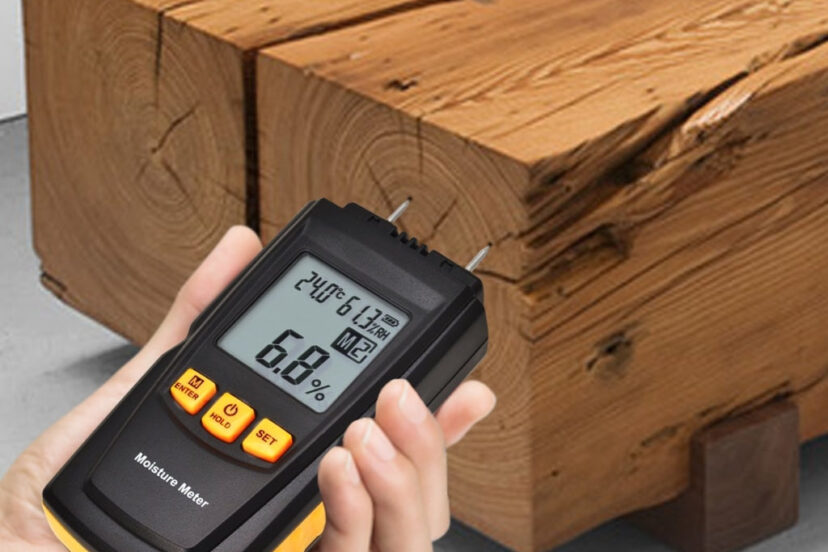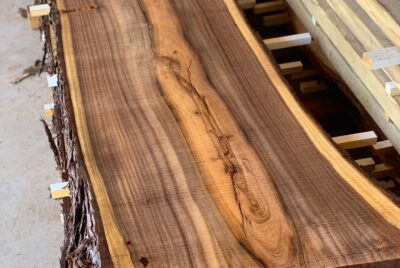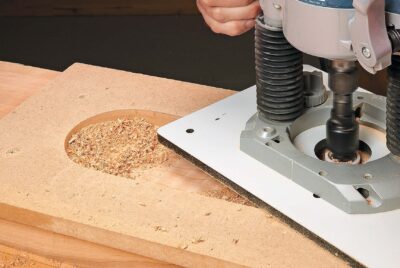Woodworking Moisture Meter: Top Reviews & Buyer’s Guide
Key Takeaways
- Understand the importance of measuring wood moisture content for woodworking success.
- Learn the differences between pin and pinless moisture meters and how to choose the right one for your project.
- Discover the top woodworking moisture meters of 2024, including standout features and benefits.
- Gain insights on the key features that enhance moisture meter performance and user experience.
- Get practical tips on what to consider before purchasing a moisture meter for woodworking.
Embrace Precision in Woodworking: Selecting the Right Moisture Meter
Woodworking is an art that marries precision with creativity. One key to achieving impeccable results is starting with wood at the correct moisture content. Why? Because wood that’s too wet can warp or crack as it dries, while wood that’s too dry can absorb moisture from the air, causing it to expand and potentially ruin your project. That’s where a moisture meter comes in handy, letting you measure the moisture content of your wood before you make the first cut.
The Role of Accurate Moisture Levels in Woodworking Success
When wood isn’t at an equilibrium with its environment, it can lead to all sorts of problems. For instance, imagine crafting a beautiful dining table only to find it has warped over time, leaving an uneven surface. Accurate moisture readings ensure that the wood you use is stable, which means your creations will stand the test of time. That’s why a good moisture meter isn’t just a tool; it’s an investment in the longevity of your work.
Moisture meters come in two main types: pin and pinless. Each has its own set of advantages that can help you in specific situations. Here’s a quick breakdown:
- Pin Meters: These meters have two metal pins that penetrate the wood to measure moisture content. They are great for pinpointing specific areas of moisture and are often used to check for water damage.
- Pinless Meters: These use an electromagnetic sensor to read moisture levels without damaging the wood’s surface. They are ideal for scanning larger areas quickly and for finished surfaces.
Why a Reliable Moisture Meter Can Change the Game
With a reliable moisture meter, you’ll know exactly when your wood is ready to be worked on, stained, or finished. This isn’t just about avoiding post-project mishaps; it’s also about ensuring the safety and structural integrity of your work. Moreover, a dependable meter can save you time and resources by preventing the need to redo projects due to moisture-related issues.
What to Look for in a Quality Woodworking Moisture Meter
When shopping for a moisture meter, consider these key features:
- Measurement Range: Ensure the meter covers the moisture range you’ll encounter in your woodworking projects.
- Accuracy: Look for a meter with a reputation for precise readings; even small deviations can be critical.
- Calibration: Some meters require calibration for different wood species. Make sure this process is straightforward.
- Display: A clear, easy-to-read display will make taking readings quicker and less prone to error.
- Durability: Woodworking shops are tough environments, so a robust meter that can withstand a few knocks is essential.
Remember, while price is an important consideration, the cheapest option isn’t always the best. Investing in a quality meter can save you money in the long run by avoiding costly mistakes.
Pin vs. Pinless: Weighing the Pros and Cons
Choosing between a pin and a pinless meter largely depends on the nature of your projects and personal preference. Pin meters provide very specific moisture readings, which is crucial when dealing with potential water damage or needing to measure moisture in different layers of wood. However, they do leave small holes, which might not be ideal for finished surfaces.
Pinless meters, on the other hand, are non-invasive and can quickly scan a large area. They’re great for getting a general sense of moisture content, especially in woodworking where the surface finish is important. That said, they might not provide the pinpoint accuracy of pin meters in localized areas.
Key Features That Enhance a Moisture Meter’s Performance
Let’s delve deeper into the features that can make or break a moisture meter’s performance:
- Sensor Quality: A high-quality sensor is the heart of a reliable moisture meter, ensuring accurate and consistent readings.
- Battery Life: A long battery life means less downtime and more time working on your projects.
- Auto Calibration: Some advanced meters come with auto-calibration features, simplifying the setup process.
- Data Hold Function: This feature allows you to freeze the reading on the display, making it easier to record measurements.
- Protective Case: A sturdy case protects your meter from the dust and debris of a woodworking shop.
Keep in mind that the best meter for you is the one that fits your specific needs. Whether you’re a hobbyist or a professional, the right moisture meter will make your woodworking more enjoyable and your results more predictable.
Deciphering Display and Interface Options for User-Friendly Operation
The interface of your moisture meter should be intuitive and easy to navigate. A complicated meter can slow you down and lead to frustration. Look for a display that’s readable in various lighting conditions, with a simple menu system. Some meters also offer Bluetooth connectivity, allowing you to sync readings with your smartphone or tablet for further analysis.
Now that we’ve covered the basics, let’s dive into the most popular moisture meters on the market and find the one that’s right for you.
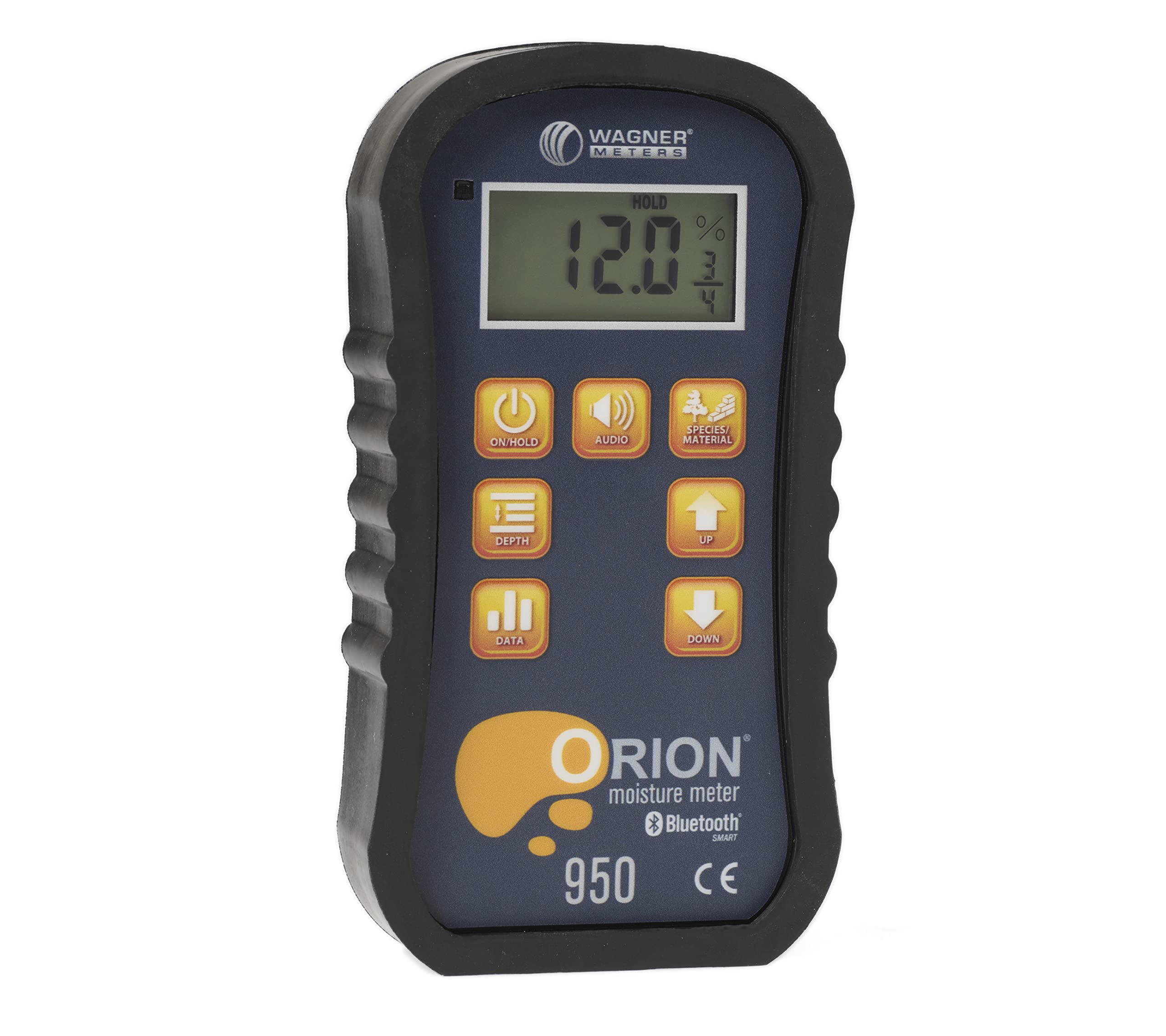
"Wagner Meters Orion® 950 Pinless Wood ..." from www.amazon.com and used with no modifications.
The Craftsperson’s Choice: Wagner Meters Orion 950
For woodworkers who demand top-notch performance and versatility, the Wagner Meters Orion 950 stands out. This pinless meter boasts a deep signal penetration that reads moisture levels up to 0.75 inches deep without leaving a mark on your wood. It’s equipped with IntelliSense technology, ensuring accurate readings even on dense and exotic woods. The Orion 950 also features a temperature correction setting, which compensates for the wood temperature, providing even more precise measurements.
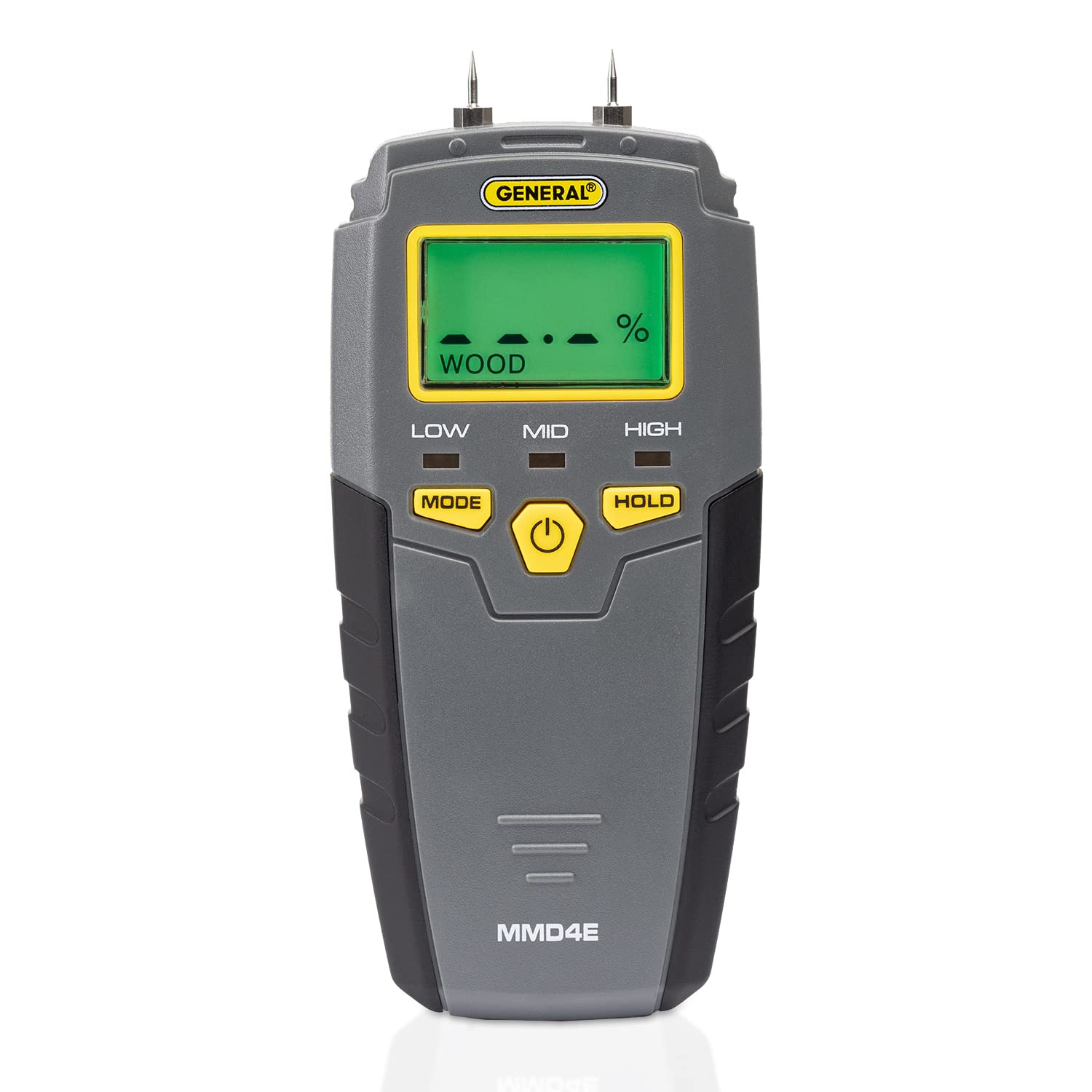
"Tools MMD4E Digital Moisture Meter ..." from www.amazon.com and used with no modifications.
The Affordable Workhorse: General Tools MMD4E
If you’re just starting out in woodworking or need a solid meter without the hefty price tag, the General Tools MMD4E is a fantastic choice. This pin-type meter is known for its ease of use, with a clear digital display and a simple, user-friendly interface. It’s compact, durable, and offers accurate moisture level readings, which is critical for preventing wood shrinkage or swelling in your projects.
The MMD4E is particularly useful for detecting leaks or moisture without guessing. It has a pin cover that doubles as a calibration checker, ensuring your meter stays accurate over time. Most importantly, it’s a reliable tool that comes in at a price point that’s accessible for hobbyists and professionals alike.
Here’s a quick comparison of the Wagner and General Tools models:
| Feature | Wagner Meters Orion 950 | General Tools MMD4E |
|---|---|---|
| Type | Pinless | Pin |
| Depth of Measurement | Up to 0.75 inches | Surface level |
| Calibration | Onboard calibration | Manual calibration check |
| Price | Higher | Affordable |
Depending on your specific needs and budget, either of these meters could be the right fit for your woodworking toolkit.
The Innovator: Klein Tools Pinless Moisture Meter
Klein Tools has a reputation for innovation, and their Pinless Moisture Meter is no exception. This tool is designed for speed and convenience, allowing you to scan large areas of wood quickly. Its pinless design means you can use it on finished surfaces without worry, and the meter provides visual and audible alerts to indicate high moisture levels.
The meter’s hold function is particularly useful, allowing you to take a reading and then remove the meter from the surface to view the result. It’s an excellent choice for woodworkers who are looking for a non-invasive way to check moisture content, especially in larger pieces of wood or finished products.
Deep Dive Reviews: Woodworking Moisture Meters That Excel
In the woodworking world, a moisture meter is more than just a tool; it’s a guardian of quality. A closer examination of the leading moisture meters reveals the nuances that make each model unique and suited to different woodworking environments and needs.
A Closer Look at Durability: Standing Up to the Workshop Environment
Durability is a critical factor when selecting a woodworking moisture meter. The workshop is a demanding environment, and your tools need to be tough enough to withstand it. The General Tools MMD4E, for instance, is built with a rugged exterior that can handle the occasional drop or bump. Its protective pin cover ensures that the delicate measuring pins remain safe when not in use.
On the other hand, the Wagner Meters Orion 950 has a shock-resistant housing and is backed by an industry-leading 7-year warranty. This speaks volumes about the confidence the manufacturer has in the durability of their product.
- General Tools MMD4E: Rugged design, protective pin cover.
- Wagner Meters Orion 950: Shock-resistant housing, 7-year warranty.
- Klein Tools Pinless Meter: Non-invasive, suitable for finished surfaces.
When choosing a meter, consider how often and under what conditions you’ll be using it. A meter that’s built to last is a worthy investment for any serious woodworker.
Accuracy in Action: Real-World Testing and Results
Accuracy is the cornerstone of any moisture meter’s value. In real-world testing, the Wagner Meters Orion 950 consistently delivers. Its advanced technology compensates for different species, temperatures, and depths, ensuring that you get an accurate reading every time. This is crucial when working with expensive hardwoods or when precise moisture content is necessary for the success of a project.
“For woodworkers, the Wagner Meters Orion 950 is a game-changer. Its accuracy across a range of conditions makes it a dependable tool for ensuring the quality and longevity of your work.” – A Professional Woodworker’s Review
The General Tools MMD4E, while more basic, still offers reliable readings that you can trust for most woodworking projects. Its simplicity means there’s less that can go wrong, making it a solid choice for everyday use.
Technical Support and Warranty: Ensuring Long-Term Reliability
After-sales support is an important consideration. A moisture meter with strong technical support and a solid warranty can provide peace of mind. Wagner’s 7-year warranty on the Orion 950 is among the best in the industry, and their customer service is known for being responsive and helpful.
General Tools also offers a warranty and customer support, although it may not be as extensive as Wagner’s. The key is to look for a company that stands behind their product and is available to help with any issues that may arise.
Woodworking Moisture Meter Buyer’s Guide
Now that you’re familiar with some of the top moisture meters available, let’s talk about how to choose the right one for your woodworking projects.
Setting a Budget: Balancing Cost and Features
Your budget will play a significant role in your decision. While it’s tempting to go for the cheapest option, remember that a moisture meter is an investment in your craft. A higher-priced meter like the Wagner Meters Orion 950 offers advanced features and durability that could save you money in the long run by preventing project failures due to inaccurate moisture readings.
On the other hand, if your needs are straightforward, a more affordable option like the General Tools MMD4E might be all you need. It’s about finding the right balance between cost and the features that matter most to you.
Calibrating for Various Wood Types: A Critical Step for Accurate Readings
Every wood species reacts differently to moisture, which can affect the accuracy of your moisture meter. That’s why it’s important to choose a meter that allows for easy calibration to the specific type of wood you’re working with. Some meters come with pre-programmed settings for different wood species, while others may require manual calibration. Either way, taking the time to calibrate your meter can make a significant difference in the precision of your measurements.
Taking the Plunge: Where to Purchase Your Moisture Meter
Ready to add a moisture meter to your toolkit? You have a few options. Local hardware stores often carry a selection of moisture meters, and staff can be helpful in providing live demonstrations. However, for the widest selection, shopping online is your best bet. Retailers like Amazon, Home Depot, and specialty woodworking shops offer a range of moisture meters at competitive prices. When purchasing online, be sure to read customer reviews to get a sense of the meter’s performance and reliability.
Before you buy, check the return policy and warranty. This can save you headaches if the meter doesn’t meet your expectations or if it encounters any issues down the line. Remember, the goal is to find a moisture meter that you can rely on for accurate readings every time.
Once you’ve made your purchase, take the time to read the manual and familiarize yourself with the meter’s features and operation. A little bit of preparation can go a long way in ensuring that you get the most out of your new tool. For more detailed guidance, consider reading this Moisture Meter Buyer’s Guide.
And there you have it! With your new moisture meter in hand, you’re ready to tackle any woodworking project with confidence, knowing that moisture won’t throw a wrench in your plans.
For more information and ideas for quick and easy woodworking projects, tap here.
FAQs On Woodworking Moisture Meters
Let’s address some common questions that come up when choosing and using a moisture meter for woodworking.
1. Can I use a moisture meter for materials other than wood?
While moisture meters are designed primarily for wood, many models can be used on other materials like drywall, plaster, and even concrete. However, for the most accurate readings on materials other than wood, it’s best to use a meter specifically calibrated for those materials.
Always check the manufacturer’s specifications to see if the meter is suitable for the materials you plan to test. Using the wrong type of meter can lead to inaccurate readings and potential project issues.
2. How do I calibrate a moisture meter, and how often should it be done?
Calibration is essential for maintaining the accuracy of your moisture meter. The process varies by model, but it usually involves using a calibration check device or setting the meter to a known moisture content value. As for frequency, it’s a good practice to calibrate your meter before each significant project or if the meter has been dropped or damaged.
Consult your meter’s manual for specific calibration instructions and follow them closely to ensure that your readings are always on point.
3. What is the difference between a pin-type and a pinless moisture meter?
Pin-type meters measure moisture content by inserting two pins into the wood, providing a localized reading. They’re great for detecting moisture in specific areas and for materials where surface damage isn’t a concern.
Pinless meters use electromagnetic sensors to scan for moisture without penetrating the wood, which is ideal for finished surfaces or when you need to cover a larger area quickly. Each type has its advantages, so consider your project needs when choosing.
4. Is there a ‘best’ moisture meter for all types of woodworking projects?
There isn’t a one-size-fits-all answer when it comes to moisture meters. The ‘best’ meter depends on the specific needs of your projects, your budget, and your personal preferences. Consider the features that are most important to you, such as accuracy, ease of use, and the type of wood you typically work with.
Research, read reviews, and perhaps even test a few models if possible to find the moisture meter that’s the perfect fit for your woodworking endeavors.
5. How important is the measurement range in a woodworking moisture meter?
The measurement range of a moisture meter is quite important. It determines the moisture content levels the meter can detect. For woodworking, you typically want a meter that can measure from at least 6% to 40% moisture content. This range covers most woodworking applications, from green lumber to kiln-dried wood.
Make sure the moisture meter you choose has a range that suits the wood you work with. Otherwise, you might end up with readings that are not useful for your projects, leading to potential issues with wood stability.
6. Where can I learn more about woodworking tools and projects?
- Here’s a great place to learn more about woodworking and project plans.
A good woodworking moisture meter is a vital tool for ensuring the quality and durability of your projects. By understanding the different types of meters, what features to look for, and how to use them effectively, you can make informed decisions and work with wood confidently. Whether you’re a seasoned professional or a hobbyist, the right moisture meter will help you create projects that not only look great but also stand the test of time.

